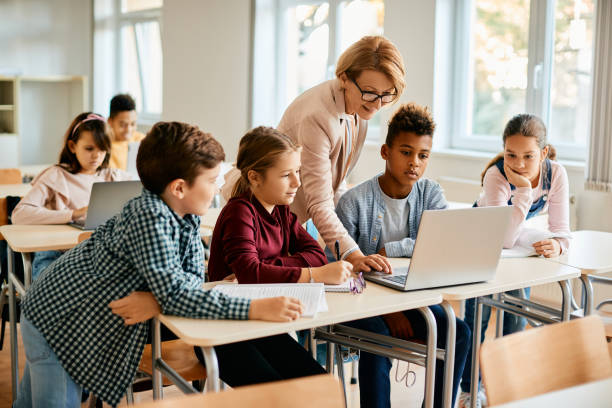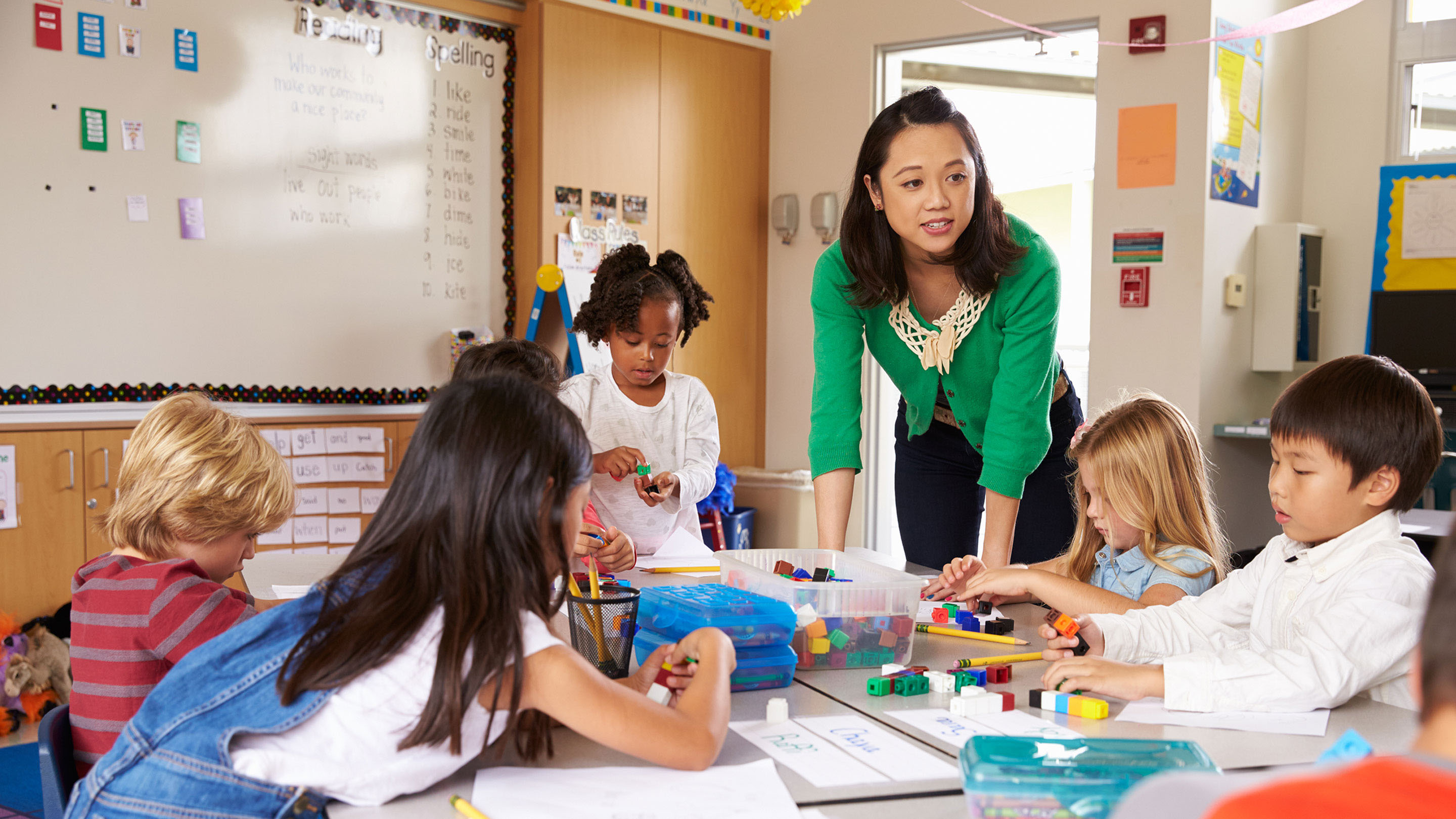Discover the Best Primary Science Tuition Singapore for Your Learning Journey
Discover the Best Primary Science Tuition Singapore for Your Learning Journey
Blog Article
A Comprehensive Overview to the Various Understanding Methods in Key Scientific Research Guideline
The exploration of varied knowing approaches in primary science guideline provides an opportunity for instructors to enhance student involvement and comprehension considerably. By taking a look at hands-on learning methods, inquiry-based approaches, and joint methods, we can identify efficient techniques that cater to different learning styles. Additionally, the combination of modern technology and distinguished direction plays a vital role in cultivating an inclusive environment. However, the concern stays: how can these approaches be successfully applied in the classroom to maximize their influence? The solution depends on a closer examination of each technique and its ramifications for training science.

Hands-On Knowing Techniques
Hands-on knowing techniques play a critical duty in key science instruction, engaging students in active expedition and experimentation. These approaches permit students to connect straight with products and phenomena, promoting a deeper understanding of scientific principles. By utilizing manipulatives, models, and real-life experiments, educators create an atmosphere where pupils can observe, hypothesize, and examine their concepts.
Such methods not only boost comprehension but also grow essential reasoning and analytic skills. When trainees get involved in tasks like building simple makers, growing seeds, or performing chain reactions, they are motivated to ask questions and seek answers with their very own monitorings. This experiential technique helps to debunk complex scientific principles, making them more relatable and available.
Furthermore, hands-on knowing advertises collaboration amongst peers, as trainees frequently work in groups to conduct experiments or share findings. This synergy not only enriches their knowing experience but likewise establishes crucial social abilities. Ultimately, incorporating hands-on strategies in main scientific research direction fosters a lifelong love of learning and curiosity regarding the environment, laying a strong structure for future academic quests in science and beyond.
Inquiry-Based Learning
Inquiry-based learning is a training technique that motivates students to ask questions, examine sensations, and create their own understanding of scientific ideas. This method changes the emphasis from conventional teacher-led direction to a more student-centered experience, where students take the effort in their educational journey. By cultivating interest, inquiry-based discovering advertises deeper involvement with the product, enabling trainees to check out topics in a purposeful context.
In practice, this strategy often includes hands-on experiments, observations, and important reasoning tasks that align very closely with the clinical technique. Students are urged to formulate theories, style examinations, and analyze information, which grows essential skills such as analytical and problem-solving thinking. The duty of the teacher in this framework is to facilitate exploration, leading students via the questions procedure while encouraging independent thought and cooperation.
Additionally, inquiry-based understanding supports a feeling of possession over the knowing process, motivating trainees to seek expertise proactively. This technique not just boosts understanding of clinical ideas but additionally promotes a lifelong love for discovering, outfitting trainees with the skills essential to browse a progressively complicated world.
Collaborative Knowing Approaches
Joint knowing approaches equip students to participate in significant interactions with peers, promoting a common duty for their academic outcomes. In primary scientific research direction, these strategies urge students to collaborate to discover clinical ideas, fix problems, and perform experiments (primary science tuition Singapore). By taking part in group activities, pupils can utilize diverse perspectives, permitting richer understanding and retention of scientific understanding
One trick element of joint discovering is the More about the author focus on communication abilities. Pupils should express their ideas, listen proactively to others, and work out ideas, every one of which are critical competencies in both academic and real-world contexts. This social communication not just boosts their understanding of scientific principles but also promotes synergy and problem resolution abilities.
Moreover, collective discovering typically causes enhanced motivation and engagement. When trainees see the value of their payments within a team, they are a lot more likely to take possession of their discovering journey. Teachers can facilitate this process deliberately organized team jobs that straighten with educational program goals while supplying support on reliable collaboration methods. Generally, incorporating collaborative discovering strategies in main science instruction grows a vibrant understanding atmosphere that prepares trainees for future academic and social obstacles.
Technology Assimilation in Scientific Research
The integration of modern technology in main science guideline enhances finding out experiences by offering cutting-edge devices and sources that sustain various mentor approaches, consisting of collaborative understanding - primary science tuition Singapore. Making use of electronic platforms, simulations, and interactive applications permits pupils to engage deeply with scientific concepts, facilitating a more hands-on approach to understanding
Digital laboratories, as an example, make it possible for learners to conduct experiments securely and efficiently, promoting inquiry-based understanding. These tools can simulate real-world scientific scenarios, enabling students to visualize complex processes that would be tough to reproduce in a traditional class setup. In addition, modern technology cultivates interaction and cooperation amongst pupils, as they can share searchings for and work together on projects through on-line platforms.
Additionally, get more multimedia discussions and instructional videos can improve lessons by satisfying varied knowing styles, making abstract concepts more easily accessible. Information evaluation tools also empower pupils to gather and interpret clinical data, strengthening vital thinking abilities. On the whole, the critical unification of technology in primary science instruction not just boosts interaction however also prepares pupils for a technically innovative society, outfitting them with essential skills for future clinical undertakings.
Separated Instruction Strategies
Differentiated direction methods are vital for attending to the varied requirements of students in main science education and learning. These methods allow educators to customize their training methods to fit differing capacities, interests, and learning designs within the classroom. By using set apart instruction, educators can develop an inclusive atmosphere that cultivates engagement and boosts understanding of clinical concepts.
One reliable technique is to make use of flexible organizing, which enables students to team up with peers at comparable ability degrees or with varying viewpoints. This strategy encourages peer knowing and advertises essential reasoning. Furthermore, offering selections in assignments can equip trainees, enabling them to pick tasks that reverberate with their interests while still satisfying curricular purposes.
Moreover, including tiered projects is an additional beneficial technique. Deliberately jobs with varying degrees of complexity, teachers can ensure that all pupils are appropriately tested, no matter their proficiency. Utilizing formative evaluations to gauge understanding more allows educators to readjust their instructional methods dynamically, ensuring that each learner receives the support they need.
Ultimately, carrying out distinguished direction techniques in key science education and learning not just boosts pupil learning results however additionally grows an enthusiasm for science, preparing trainees for future scholastic searches.

Final Thought
In summary, reliable straight from the source key scientific research guideline necessitates a complex approach that includes hands-on learning, inquiry-based techniques, and collective strategies. The combination of modern technology and separated instruction additionally accommodates varied knowing designs, cultivating an environment helpful to expedition and essential thinking. By applying these techniques, educators can enhance pupil interaction and comprehension, inevitably supporting a long-lasting enthusiasm for scientific research and inquiry. Such detailed methods are important for developing notified and interested future scientists.
The exploration of varied discovering techniques in primary science direction offers a chance for instructors to improve pupil interaction and comprehension considerably.Hands-on understanding methods play an essential role in primary science guideline, involving students in energetic exploration and testing.Inquiry-based learning is a training method that urges trainees to ask concerns, investigate sensations, and build their very own understanding of scientific concepts.Joint discovering techniques empower students to engage in meaningful interactions with peers, fostering a common responsibility for their educational end results. Generally, including collaborative discovering methods in key scientific research guideline grows a dynamic understanding environment that prepares pupils for future academic and social obstacles.
Report this page